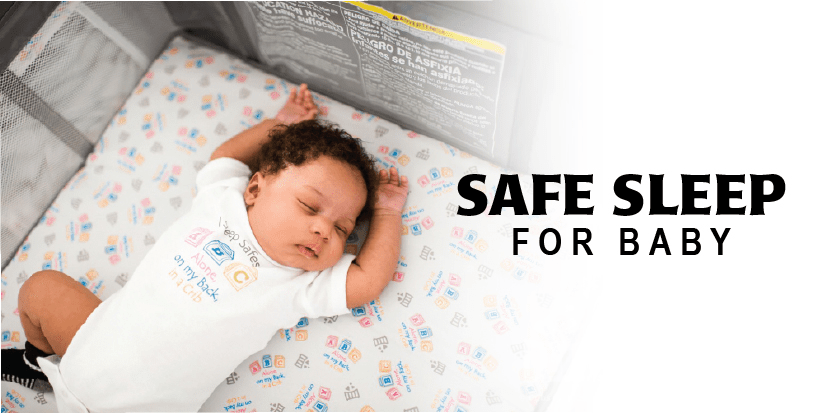Creating a Safe Sleep Environment for Your Baby: What Every Parent Should Know
- Category: OBGYN, Pediatrics, Women's Health
- Posted On:

Ensuring your baby sleeps safely is one of the most important things you can do to protect their health and well-being. Safe sleep practices can significantly reduce the risk of Sudden Infant Death Syndrome (SIDS) and other sleep-related infant deaths. Let’s walk through everything you need to know to create the safest sleep environment possible for your little one.
What Does a Safe Sleep Environment Look Like?
Room-share, don’t bed-share. Keep your baby in the same room with you for at least the first 6 months but give them their own sleep space—like a crib, bassinet, or portable play yard. Your bed is not a safe sleep space for your baby.
Use a firm, flat, and level sleep surface. The mattress should return to its original shape quickly if pressed and should not be inclined like a swing or a car seat. Cover it only with a tight-fitting crib sheet.
Clear the crib. Remove everything from baby’s sleep area, except a fitted sheet to cover the mattress. No objects, toys, or other items.
Use a wearable blanket or sleep sack. Use a wearable blanket to keep baby warm without blankets in the sleep area. Make sure baby’s head and face stay uncovered during sleep.
Always place your baby on their back to sleep. This goes for every nap and every bedtime.
Avoid couches and armchairs. These are not safe places for babies to sleep—whether alone, with people, or with pets.
Maintain a smoke- and vape-free environment. Both during pregnancy and after birth, keeping the air clean helps protect baby’s health.
Safe Sleep Tips to Reduce the Risk of SIDS
In addition to the sleep setup, here are other expert-backed recommendations for safer sleep:
Breastfeed or provide human milk. Feeding your baby human milk—directly or by pumping—can lower the risk of SIDS. Exclusively feeding human milk for the first 6 months offers the greatest protection.
Place babies on their backs to sleep for naps and at night.
Stay smoke- and vape free during pregnancy and keep baby’s surroundings smoke and vape-free.
Use a sleep surface for baby that is firm (returns to original shape quickly if pressed on), flat (like a table, not a hammock), level (not at an angle or incline) and covered only with a fitted sheet.
Stay drug- and alcohol-free during pregnancy, and make sure anyone caring for baby is drug and alcohol-free.
Avoid products and devices that go against safe sleep guidance, especially those that claim to “prevent” SIDS and sleep-related deaths.
Avoid letting baby get too hot, and keep baby’s head and face uncovered during sleep.
Avoid heart, breathing, motion, and other monitors to reduce the risk of SIDS.
Share a room with baby for at least the first 6 months. Give babies their own sleep space (crib, bassinet, or portable play yard) in your room, separate from your bed.
Get regular medical care throughout pregnancy.
Avoid swaddling once baby starts to roll over (usually around 3 months of age), and keep in mind that swaddling does not reduce SIDS risk.
Keep things out of baby’s sleep area—no objects, toys, or other items.
Follow health care provider advice on vaccines, checkups, and other health issues for baby.
Give babies plenty of “tummy time” when they are awake, and when someone is watching them.
Offer baby a pacifier for naps and at night once they are breastfeeding well.
📞 Need More Information?
The Safe to Sleep® campaign provides evidence-based guidance for parents and caregivers to help reduce the risk of sleep-related infant deaths. You can reach out for resources or support using the info below:
📱 Phone: 1-800-505-CRIB (2742)
📠 Fax: 1-866-760-5947
📧 Email: SafetoSleep@mail.nih.gov
🌐 Website: https://safetosleep.nichd.nih.gov
For even more product safety info, visit the U.S. Consumer Product Safety Commission at CPSC.gov/SafeSleep.
NIH Pub. No. 22-HD-5759 | August 2022




